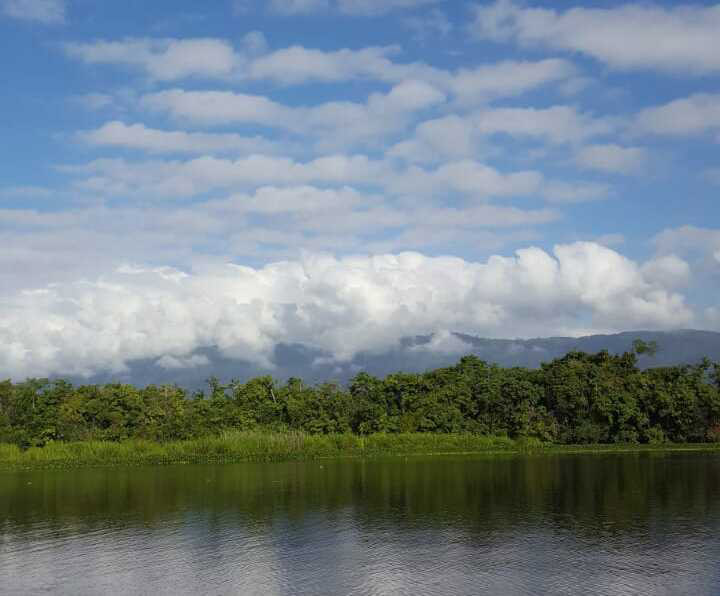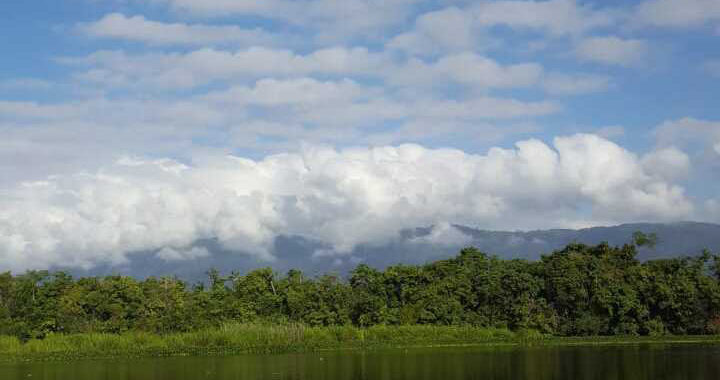Bocas del Polochic, located in El Estor, Izabal, is one of the most important wetlands in Guatemala. It is formed by the mouth of the Polochic River, with forests, which serve as a biological corridor for species that share ecosystems between Sierra de las Minas and El Estor; and rivers, such as the Polochic river, Oscuro river, and Lagartos river, which maintain the balance in the lake.
It was declared a protected area on June 11, 1996. Since then, the anniversary is celebrated, remembering the importance of the site and its conservation. This year we celebrate the 26th Anniversary of this important wetland that maintains life in our precious Lake Izabal.
The area is co-managed by Fundación Defensores de la Naturaleza and the National Council of Protected Areas (CONAP, for its acronym in Spanish). The wetland was declared a RAMSAR site: areas of international importance declared by the RAMSAR Convention, the first of the modern intergovernmental treaties on the conservation and rational use of natural resources. (CONAP, 2020)
The refuge has more than 20,000 hectares, with 341 species of flora, 500 species of fauna, and 8 communities of the Q’eqchi’ ethnic group, that live in the refuge’s area of influence and benefit from its services (Defensores, 2022). The site is home to the wonderful West Indian manatee (Trichechus manatus manatus), crocodiles (Crocodylus acutus), howler monkey (Allouata pigra), and many species of birds, fish, amphibians, reptiles, mammals and invertebrates. As well as trees such as Caoba (Swietenia macrophylla), Chicozapote (Manilkara zapota), Zapotón (Pachira aquatica), Caimito (Chrysophyllum cainito), San Juan (Vochysia guatemalensis), Santa María (Calophyllum brasiliense), Llorasangre (Swartzia lundellii), Ceiba (Ceiba pentandra), among others (Vásquez and Prado, 2001). The wetland allows it to be a biological corridor between the Sierra de las Minas Biosphere Reserve and Sierra Santa Cruz, which benefits biodiversity.

Howler monkey (Allouata pigra) with her calf in Río Lagartos
May 2022. Photography by Belen Chacón

Crocodylus acutus in Bocas del Polochic
Feb 2018. Photography by Nicholas Hellmuth
Wetlands are productive environments, providing well-being, health and safety to the wildlife and people around them. Among some ecosystem services they provide, we can mention:
- Water storage
- Recharge of underground aquifers
- Water purification
- Retention of nutrients, sediments and pollutants
- Storm protection and flood mitigation
- Stabilization of local climatic conditions
(David, Blasco and Carbonell, 1996)

Entrance of Río Oscuro, Refugio de Vida Silvestre Bocas del Polochic
May, 2022. Photography by Belén Chacón
FLAAR MESOAMERICA is interested in studying and documenting wetland ecosystems due to the existing biodiversity in them, the environmental services they provide, and therefore the importance of their conservation.
Bibliography
- 1996
- Manual de la Convención de Ramsar: Una guía a la Convención sobre los Humedales de Importancia Internacional. Oficina de la Convención de Ramsar.
- n.d.
- Refugio de Vida Silvestre Bocas del Polochic: Nido de Vida.
Available Online
https://defensores.org.gt/areas-protegidas/refugio-de-vida-silvestre-bocas-del-polochic/
- n.d.
- El “Refugio de Vida Silvestre Bocas del Polochic”, fue declarado área protegida en el año 1996.
Available online:
https://conap.gob.gt/el-refugio-de-vida-silvestre-bocas-del-polochic-fue-declarado-area-protegida-en-el-ano-1996/
- 2001
- Los humedales de Guatemala. Museo de Historia Natural/USAC. Proyecto Humedales
MUSHNAT/UICN.
- n.d.
- Refugio de Vida Silvestre Bocas del Polochic: Nido de Vida.

